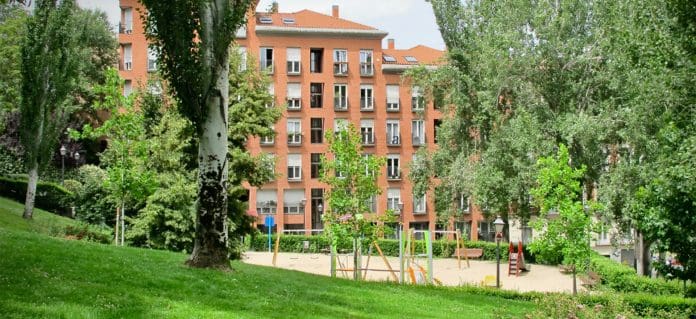Emma Callaghan, senior planner with planning and development consultancy Lichfields, reflects on the environmental factors people consider when choosing whether to live in town and city centres
The reasons why young people like to live in central areas are varied. They range from high levels of public transport accessibility and enjoying the buzz of city centre life through to easy access to employment, shopping, leisure and cultural facilities.
But those with families and older generations have different priorities – and are often more sensitive to the environment around them.
With urban centres experiencing higher levels of noise and air pollution than suburban and more rural locations, it is clearly important for city centre residential accommodation to be designed in a way which designs out, or at least minimises, the impact of noise and air pollution upon daily life.
This can be achieved through the development of higher levels of greenspace in close proximity to residential areas, which recent research confirms results in lower day-evening-night noise levels.
In town and city centre planning, wellbeing considerations are more important than ever
This is particularly important given that there is now much greater awareness of these issues than has been the case in the past and exposure to noise is now rightly recognised as a risk factor related to both physical and mental health.
This is, in part at least, due to the lived experience of many people during the Covid-19 pandemic, when lockdown restrictions resulted in huge drops in noise and air pollution.
Access to greenspace
Analysis carried out by the environmental charity Keep Britain Tidy has revealed that 70% of people who live in UK towns and cities do not have access to good quality greenspace, which rises to 75.8% in the most deprived areas.
Indeed, poor access to greenspace, including amenity/play space, is a particular issue in UK town and city centres and a clear challenge, though some local authorities are being proactive in addressing this, eg through the creation of new “pocket parks”.
Indeed, in Stockton, the council is going further and developing a new urban park on the site of a former shopping centre, creating a new green space within the town centre which will also support other initiatives aimed at diversifying the mix of uses, including new residential development, within and around the centre.
Crime influences public attitudes towards town centre living
Crime, or the perceived risk of crime or threat to personal safety security, is another environmental factor influencing public attitudes towards town centre living.
Many people share concerns that incidences of public disorder and anti-social behaviour are much higher in town centres, contributing to a sense that these are not safe places to live.
However, our analysis of UK crime statistics as part of an assessment of town and city centres across the North East and Yorkshire region, reveals these concerns are not necessarily reflected in reported crime data.
More specifically:
- Public disorder: Marginally higher (around 3%) in town centres than wider local authority areas.
- Criminal damage and arson: Marginally lower (around 3%) in town centres than wider local authority areas.
- Anti-social behaviour: Marginally lower (around 2%) in town centres than wider local authority areas.
Access to health and education facilities
Concerns around reduced access to health and/or education facilities also affect people’s decisions around town and city centre living. However, such concerns are not necessarily borne out in reality.
In terms of the population as a whole, 94% of people residing in urban centres areas live within a 20-minute walk of a GP. This compares with rural areas, where just 19% of people live within a 20-minute walk of a health centre or surgery.
In relation to access to educational facilities, colleges and universities are often located in urban centres, while the high levels of public transport accessibility in town and city centres mean that, certainly in terms of secondary education, schools are often quite accessible.
Access to primary education can be more problematic as few primary schools are located in centres – but generally educational facilities are accessible from town and city centres – and more accessible than rural areas.
Challenges and opportunities in town and city centre planning
Many larger urban authorities in the UK have started to develop strategies aimed at promoting city centre living in recent years – and while each local authority takes a slightly different approach, they all generally highlight the importance of the wider environment.
Glasgow City Council’s approach, for example, seeks to identify different character areas within the different parts of the city before setting out specific recommendations on the approach to be taken to promote residential development/communities in each area.
It’s clear there are a range of environmental factors that shape people’s views on living in town and city centres. Many of these issues can be addressed through good planning and design.
Where the environment is right – or at least there is a plan in place to create an environment where people want to live – there is commercial interest from the development sector in promoting city centre living.
The challenge as planners, both through development management and plan preparation, is to make the most of this opportunity by creating environments where people choose to live.
Emma Callaghan

Senior planner
Lichfields
Tel: +44 (0)20 7837 4477

















